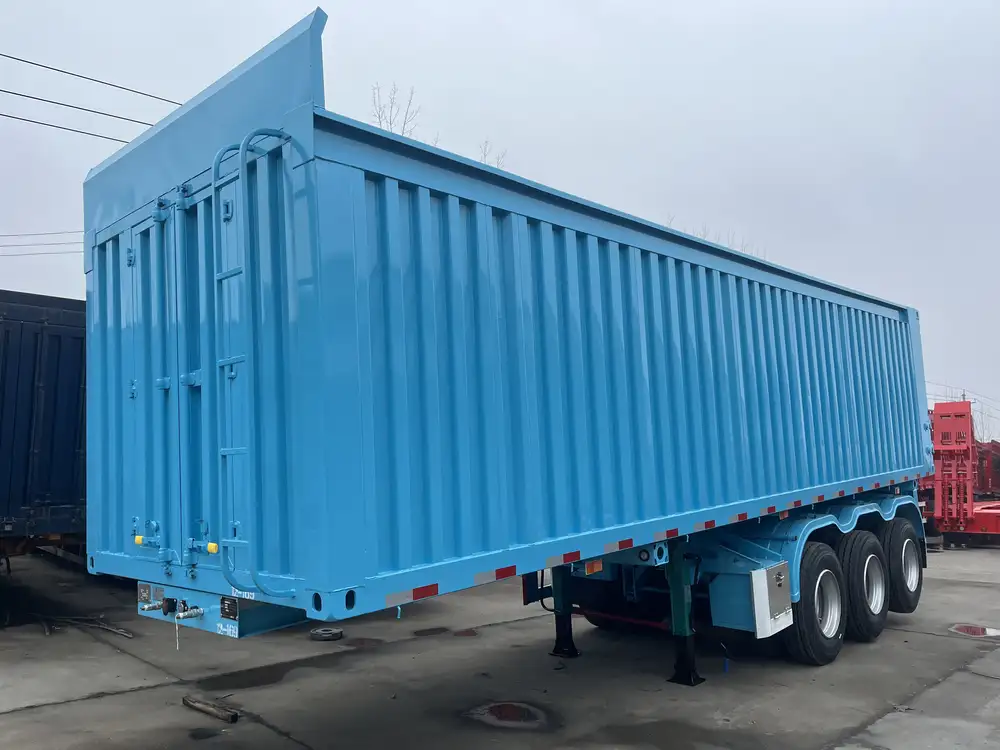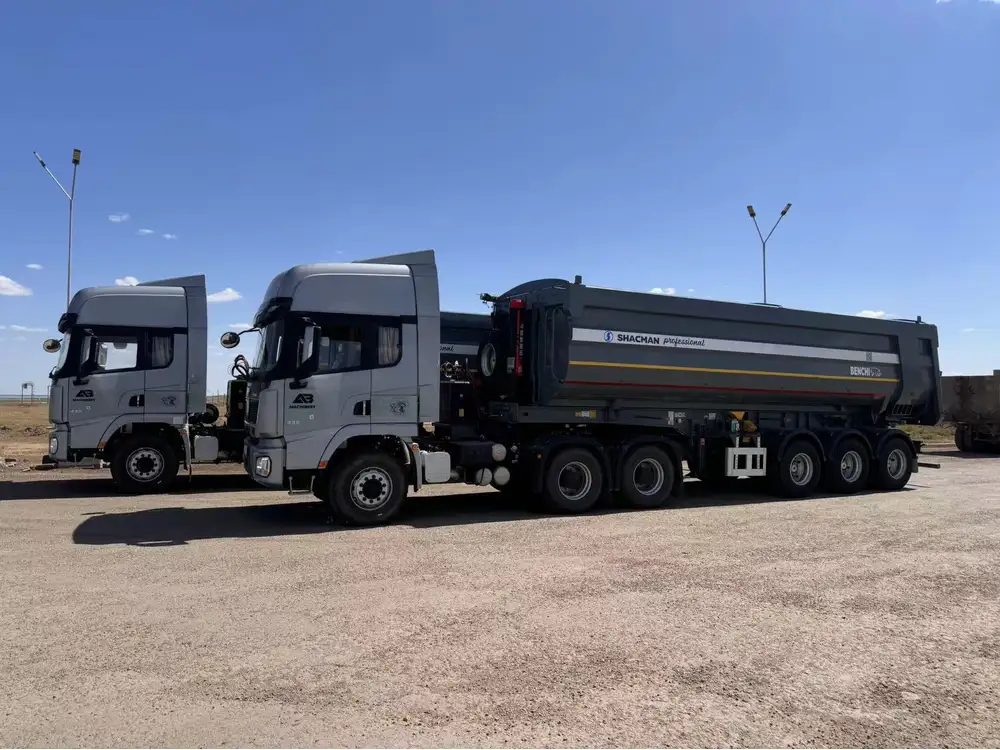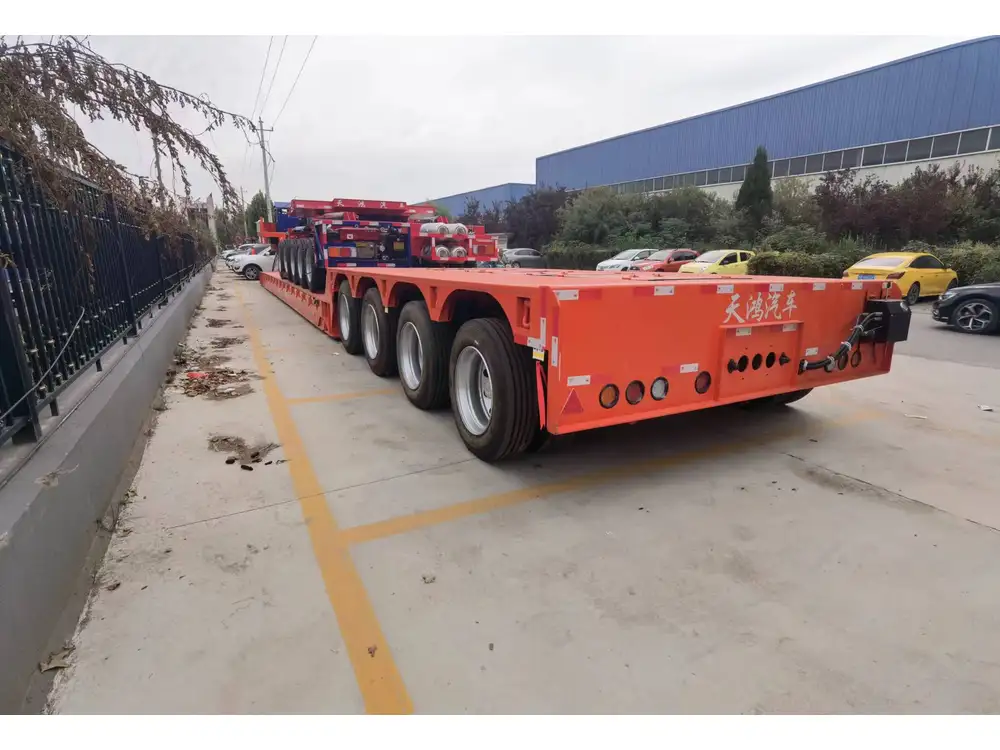Introduction to Dry Van Trailers
In the world of freight and logistics, dry van trailers serve an indispensable role. These enclosed trailers are designed specifically to protect cargo from the elements and are widely used across various industries. For transport companies and logistics providers, understanding the dimensions and characteristics of dry van trailers—including their width—can significantly impact loading and unloading procedures, regulatory compliance, and overall operational efficiency.
What Is a Dry Van Trailer?
A dry van trailer is a type of trailer that is fully enclosed. Unlike open flatbed trailers, dry vans offer protection from weather conditions and theft, making them ideal for shipping a wide range of goods. The standard construction materials used for these trailers include aluminum or steel, ensuring durability and resistance against corrosion. Common cargo transported in dry vans includes textiles, retail goods, machinery, and packaged foods.

Key Specifications of Dry Van Trailers
When assessing the practicality and suitability of dry van trailers, several critical specifications come into play. Here’s a comprehensive breakdown:
| Specification | Typical Measurements |
|---|---|
| Length | 28 to 53 feet |
| Width | 8.5 feet |
| Height | 13.5 feet |
| Payload Capacity | 45,000 to 50,000 lbs |
| Interior Volume | Up to 3,800 cubic feet |
| Axle Configuration | 2 to 3 axles |
How Wide Is a Dry Van Trailer?
One of the most common queries among shippers and freight carriers is about the width of dry van trailers. Typically, the width of standard dry van trailers measures 8.5 feet (102 inches). This measurement adheres to the federal regulations set by the Federal Highway Administration (FHWA) concerning maximum vehicle dimensions for vehicles operating on public highways.
However, variations do exist. Some specialized trailers may possess narrower or wider dimensions, particularly custom-built trailers designed for specific cargo needs or non-standard configurations.
Importance of Knowing Trailer Width

1. Regulatory Compliance
Comprehending the measurements of a dry van trailer is crucial for compliance with transportation laws. Over-width trailers can face increased scrutiny at weighing stations and may require special permits for road use.
2. Loading Practices
Knowledge of trailer width directly influences loading and unloading practices. It dictates the spacing required at docks, the type of equipment needed for handling cargo, and the safe stacking of goods.
3. Bridge Clearances
Operators must remain aware of the dimensions of their trailers to avoid situations that could lead to bridge hits or damage to infrastructure. For example, while a trailer might fit on a road, low-lying overpasses could pose significant risks.

Types of Dry Van Trailers
Understanding the different types of dry van trailers is essential for making informed decisions regarding shipping needs. Here are some notable examples:
Standard Dry Van Trailers
These are the most commonly utilized types, featuring customizable interior configurations to accommodate a wide assortment of goods.
Refrigerated Dry Vans (Reefers)
While primarily used for temperature-sensitive cargo, refrigerated dry vans maintain the enclosed characteristics typical of dry vans. They offer additional temperature control, crucial for shipping perishable items.

High-Cube Trailers
These trailers offer increased height, allowing for a greater cargo capacity. Often standing at 13.6 feet, they can carry more volume compared to standard models, making them advantageous for certain high-volume freight operations.
Factors Affecting the Width of Dry Van Trailers
While the standard width is widely recognized, several factors may influence an organization’s choice or the specific adaptations of dry van trailers.
1. State Regulations
Different states may have specific width regulations that can affect operational decisions. It is vital for carriers to check local guidelines to ensure their fleet complies.

2. Cargo Requirements
The type of cargo transported could necessitate a variation in trailer width. Companies dealing with oversized or unusually-shaped products may need specialized trailers designed to accommodate these unique specifications.
3. Manufacturing Techniques
Advances in manufacturing and design have led to the creation of tailored dry van solutions. Custom-built trailers may have differing dimensions based on the manufacturer’s specifications or the intended use.
Maximizing Efficiency with Dry Van Trailers
Understanding trailer width is just one step—fully optimizing the use of dry van trailers entails maximizing the benefits they offer. Here are some strategic approaches:

Optimal Loading Techniques
To maximize space, implement proper loading techniques. Use efficient stacking methods to maximize the interior volume without compromising safety or risk of damage.
Utilize Load Bars and Straps
Employ load bars and straps to secure items, allowing more efficient use of vertical space and minimizing the likelihood of in-transit damage.
Regular Maintenance and Inspections
Keeping the trailer in optimal condition is critical for operational efficiency. Regularly inspect tires, brakes, and locking mechanisms to ensure reliability and safety.

Conclusion: The Importance of Understanding Dry Van Trailer Width
In summary, understanding the width and specifications of dry van trailers is essential for anyone involved in logistics and freight transportation. From regulatory compliance to enhanced operational efficiency, knowing how wide a dry van trailer is—and its ramifications—plays a crucial role in the successful management of shipping needs.
FAQs About Dry Van Trailers
1. What is the average cargo capacity of a dry van trailer?
The average cargo capacity typically ranges between 45,000 and 50,000 pounds, depending on the design and structure of the trailer.
2. How does the interior height of a dry van impact cargo?
The interior height, usually around 13.5 feet, allows for more efficient stacking and storage of goods, enhancing the volume of cargo carried per journey.
3. Do dry van trailers require special permits for operation?
Generally, standard width dry van trailers do not require special permits; however, wider or specialized trailers may need authorization based on local regulations.
4. Can I use a dry van trailer for oversized cargo?
While dry van trailers are designed for various products, transporting oversized cargo requires specialized trailers that adhere to specific guidelines and regulations.
5. What maintenance practices should be followed for dry van trailers?
Routine inspections for wear and tear, checking tire conditions, brake systems, and ensuring that locking mechanisms are functional are critical for maintaining a dry van trailer in optimal condition.
By comprehensively understanding the specifications, operational strategies, and regulations associated with dry van trailers, manufacturers, transporters, and logistics managers can make informed decisions that enhance efficiency, compliance, and ultimately, profitability in their operations.



